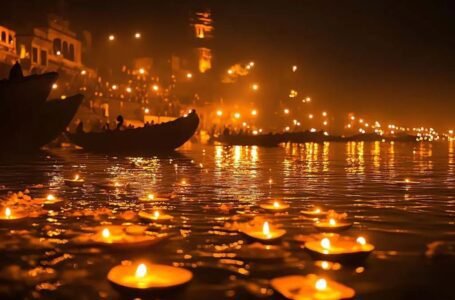Censoring the Soul: Banned Books and the Battle for Indian Expression

In a nation such as India, where narrative is old, complicated, and organically connected with oral traditions, mythologies, and a prolonged written past, writing is never innocent. Writing is always weighed down by an obligation to represent, to cause trouble, and most often, to revolt. And yet again and again, Indian writers have encountered an inexorable barrier: censorship. This wall, built in the name of public order, morality, nationalism, or religion, has been invisible and brutal. “Censoring the soul” is not figurative language—it’s an accurate description of the systematic muzzling of voices that aspire to rock the collective complacency, that aspire to challenge the establishment, or that simply refuse to fit into the approved narrative.
From the colonial era to contemporary India, the history of censored books is one of discomfort—a discomfort with complexity, contradiction, and transformation. During the British occupation, colonial administrators perceived vernacular literature and journalism as possible menaces. The Vernacular Press Act of 1878 was one such effort to silence Indian voices that spoke against colonial power. Books critical of imperial power or stirring nationalist consciousness were consistently seized. Bankim Chandra Chatterjee’s Anandamath, though later hallowed for its patriotism, was suspiciously regarded initially. Ironically, independent India, which came into being as a result of the flames of resistance and freedom of speech, inherited and sometimes aggravated this tendency to suppress dissent.
During the 20th century, censorship went from being a colonial mechanism to a nationalist fervor. Independent India prohibited books for all sorts of reasons—obscenity, communal discord, disrespect to religion or historical figures, or danger to sovereignty. Salman Rushdie’s The Satanic Verses, banned in 1988, is arguably the most internationally contested example. While the book was never officially published in India, its reputation had preceded it. The government, anticipating communal disturbance at its portrayal of Islamic themes, preemptively banned the book under Section 95 of the Criminal Procedure Code. But what was really being safeguarded—the religious feelings of the masses, or the political interests of a vulnerable state?
Rushdie’s case unleashed the floodgates of an old debate: must literature offend? Can literature be offensive and yet be granted a public existence? And more critically, who gets to decide what offends? The state, religious leaders, or a sensitive public? Authors such as Perumal Murugan were responding to these questions not in theory but in living experience. His novel Madhorubhagan (One Part Woman), which deals with the emotional suffering of a barren couple and brushes against cultural and sexual conventions in rural Tamil Nadu, prompted outrage from right-wing forces. The backlash compelled Murugan to declare, in a now-infamous Facebook post, that the writer Perumal Murugan was “dead.” It was only after the Madras High Court upheld his freedom to write, terming it part of the “inalienable right of freedom of expression,” that Murugan came back, phoenix-like, to literature.
The Perumal Murugan incident is not an isolated one—it is symptomatic of a deeper unease with literary imagination that challenges inherited norms. Though laws such as Section 295A (blasphemy) or Section 124A (sedition) were intended to regulate hate speech or state-threatening speech, they are frequently used against writers, poets, and filmmakers. Indian censorship does not always take the form of government censorship—it usually takes the form of social pressure, threats, and self-censorship. Publishers withdraw, bookstores remove copies, and authors rewrite or pull out their work. The cold is insidious but crushing. Censorship at such times becomes cultural, not legal—a struggle waged in whispers and silences.
Take the example of Rohinton Mistry’s Such a Long Journey, removed from the University of Mumbai syllabus in 2010 following protests by a student political outfit. The novel, which satirizes the Shiv Sena and examines the political fears of post-Emergency India, was a victim of campus politics. Lost in the process was not merely a novel, but also the chance for students to critically encounter dissent and difference. A.K. Ramanujan’s essay Three Hundred Ramayanas, which examined various tellings of the Ramayana across regions and traditions, was also pulled out of Delhi University’s syllabus after protests. The irony was bitter: a scholar renowned for his great affection for Indian traditions was censored for just highlighting their richness and diversity.
The politics of banning is not restricted to fiction or academic papers. Poetry, also, has been targeted for suppression. Revolutionary poets such as Pash, Varavara Rao, and others who wrote in regional languages have been arrested, exiled, and worse. Their poetry, too, frequently citing Marxist or Dalit sources, is labeled as “anti-national” or “seditious.” But listen to the bare beat of reality in these verses—reality regarding inequality, caste violence, state terror, and dreams of freedom. Censorship is not merely concerned with shielding public feelings here but silencing political dissent.
In this environment, it becomes necessary to wonder: what becomes of a society that fears its own storytellers? When literature is boiled down to comfort, and writers are asked to flatter instead of challenge, the heart of a nation starts to atrophy. The poet becomes decorative, the novel an escape, and criticism an act of treason. But historically, literature has never thrived under such limitations. Indian literature—classical, medieval, or modern—has always existed in tension, contradiction, and transgression. Bhakti poets challenged Brahminical power. Sufi saints violated orthodoxy through poetry. Ismat Chughtai, Saadat Hasan Manto, and Amrita Pritam were modern authors who wrote openly about sexuality, trauma, and Partition—even when they faced the threat of prosecution or exile.
Manto himself is a colossus figure in this tradition of resistance. His short stories, such as Toba Tek Singh or Khol Do, are stark, truthful accounts of the human toll of Partition. His refusal to sanitize pain or euphemize his language brought forth several obscenity trials. However, Manto’s writing demonstrates the folly of censorship—it queries why we are more outraged by words than by the atrocities they describe. His iconic comeback still lingers on: “If you cannot abide these stories, it is because we live in unbearable times.”
Now, fresh technologies have overlayed this discourse. The online era has made alternative publishing grounds—blogs, independent presses, e-books, podcasts—but enhanced surveillance as well. Online hate campaigns, cyberbullying, and digital restrictions now join regular censorship. But the urge to write, to speak, to sing truth to power, is unbroken. Writers keep discovering metaphors, codes, and narrative techniques to evade censors. Some use allegory, others use satire. Some withdraw into poetry, where truth is concealed in rhythm and symbol.
It must also be mentioned that censorship does not always descend from above—sometimes it ascends from below. Self-censorship, created out of fear or exhaustion, is likely the saddest. Writers who freeze, revise, or withdraw because of possible retribution become ghosts within their own stories. And yet, they are not solitary figures. There is an increasing realization, particularly among young writers and readers, that literature has to continue as a site of danger. Literature that won’t take a risk is literature that doesn’t breathe.
Against all odds, the forbidden, the incinerated, and the interred books resurface. They are read in clandestine book clubs, republished by courageous publishers, or brought back into public consciousness. The history of Indian writing is not merely one of repression, but also of resistance. Every forbidden book serves as a mirror—to reflect not just the fears of the state, but also the courage of its authors.
To further grasp the breadth of censorship in India, one must look beyond state bans to the deeper psychology of silencing. What drives this urge to suppress? Often, it is fear—of dissent, discomfort, or difference. Literature challenges the status quo, and those in power, whether political, religious, or cultural, often respond with erasure rather than engagement. Take Lajja by Taslima Nasrin, a novel that explored communal violence in Bangladesh. Though not Indian by origin, Nasrin’s voice found both refuge and resistance in India. Initially welcomed, she was later forced to leave West Bengal following protests. Her exile reflects how even spaces of apparent tolerance can become inhospitable when literature unsettles dominant sentiments. Censorship, in such cases, isn’t just a political act—it is a cultural panic.
Even more telling is the quiet censorship of everyday life—publishers declining manuscripts out of caution, films being re-edited before release, or authors self-censoring to avoid backlash. The fear of offense has turned into a regime of silence, where imagination becomes suspect.
And yet, literature survives. Banned books resurface, often becoming more powerful because of the attempt to bury them. Stories seep through the cracks—through underground readings, digital archives, or whispered recommendations. Writers continue to write, because the soul cannot be permanently censored. It only waits—patiently, defiantly—for the right reader to set it free.
Finally, then, the fight for Indian voice is by no means won. It is a fight fought with every novel when an author decides to express an uncomfortable truth, every time a reader reaches out for a book that shakes but does not soothe. Legal or cultural censorship will forever seek to mark out the edges of what can and cannot be expressed. But writing, precisely by its definition, overflows beyond those edges. It speaks in languages, it brings back the muted, and it has the temerity to dream out loud. As long as authors pen, and readers read, the soul will never be completely censored.


